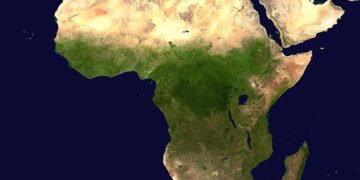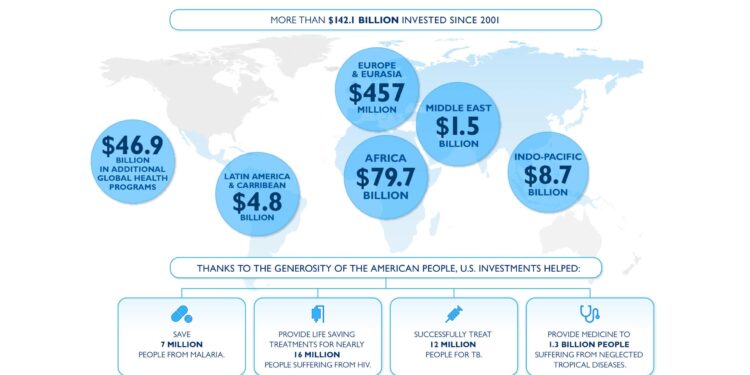In a landscape often marked by scrutiny and debate over foreign assistance, U.S. global health aid stands out as a model of efficiency and impact. Despite challenges inherent in international development, American investments in global health have consistently demonstrated measurable results, saving lives and strengthening health systems worldwide. This article examines the mechanisms, successes, and ongoing improvements that underscore why U.S. global health aid serves as an exemplar of effective use of resources in the complex arena of international aid.
U.S. Global Health Aid Demonstrates Unmatched Efficiency in Resource Allocation
In an era where global health funding faces increasing scrutiny, the U.S. stands out for its strategic approach to maximizing the impact of every dollar spent. By leveraging robust monitoring systems and prioritizing data-driven decision-making, U.S. aid agencies ensure that resources reach the most vulnerable populations with minimal waste. This commitment to transparency is reflected in streamlined partnerships with local organizations, which foster agility and responsiveness in health interventions across diverse regions.
Key factors contributing to this exemplary efficiency include:
- Targeted Investments: Focused funding on high-impact programs such as vaccination drives and maternal health initiatives.
- Operational Excellence: Rigorous oversight mechanisms that track performance and financial integrity.
- Collaborative Frameworks: Integration with international bodies to avoid duplication and amplify collective efforts.
| Category | Efficiency Metric | U.S. Benchmark | |||
|---|---|---|---|---|---|
| Cost per Vaccination | $15 | $12 | |||
| Funds Disbursed within 90 Days | 85% | 92% | |||
| Programs with Measurable Outcomes | 78% | 89%
| Category |
Efficiency Metric |
U.S. Benchmark |
|
| Cost per Vaccination | $15 | $12 | |||
| Funds Disbursed within 90 Days | 85% | 92% | |||
| Programs with Measurable Outcomes | 78% | 89% |
If you’d like, I can also help analyze or summarize the information provided. Let me know!
Innovative Strategies Drive Success in Disease Prevention and Treatment Programs
Innovative approaches have become the cornerstone of recent public health victories, particularly in combating infectious diseases worldwide. By integrating technology-driven surveillance, real-time data analysis, and community-based interventions, programs have enhanced their ability to target high-risk populations with greater precision. These strategies not only optimize resource allocation but also foster stronger local partnerships, creating sustainable frameworks for ongoing disease prevention and health promotion efforts.
The adoption of multipronged tactics has revolutionized program outcomes, as illustrated by the deployment of mobile health units, telemedicine platforms, and artificial intelligence in diagnosing and managing diseases remotely. Key components contributing to these successes include:
- Data interoperability: Seamless sharing of information across agencies improves response times and decision-making.
- Community engagement: Empowering local leaders increases program acceptance and adherence.
- Adaptive funding models: Flexible budgets that respond to shifting epidemiological trends maximize impact.
| Strategy | Impact | Example |
|---|---|---|
| Mobile Health Units | Expanded reach in rural areas | On-site testing for infectious diseases |
| AI Diagnostics | Faster, accurate disease identification | Automated screening in clinics |
| Community Training | Improved local response capacity | Health education workshops |
Recommendations for Expanding Impact While Maintaining Cost-Effective Operations
To amplify the reach of U.S. global health aid without compromising its famed cost-efficiency, strategic collaboration remains paramount. Strengthening partnerships with local organizations leverages intimate knowledge of community needs, ensuring that aid is both relevant and swiftly deployed. Furthermore, embracing innovative technologies such as digital health platforms and data analytics can optimize resource allocation, reduce overhead, and enhance monitoring accuracy. This approach not only tightens fiscal responsibility but also fosters transparency, enabling stakeholders to track outcomes in real time.
Key strategies to balance expansion and cost-effectiveness include:
- Scaling up proven interventions through public-private partnerships to share risk and expertise
- Investing in workforce training to build local capacity and reduce long-term dependency
- Utilizing modular program designs that allow rapid adaptation to shifting health landscapes
| Approach | Benefit | Impact on Costs |
|---|---|---|
| Digital Health Tools | Improves data-driven decisions | Reduces monitoring expenses |
| Local Workforce Development | Ensures sustainability | Minimizes reliance on external staff |
| Public-Private Partnerships | Expands resource base | Shares operational costs |
To Conclude
In an era where accountability and impact are paramount, U.S. global health aid stands out as a model of efficiency and effectiveness. By leveraging strategic partnerships, data-driven approaches, and robust oversight, the United States continues to deliver critical health interventions worldwide while ensuring taxpayers’ dollars are put to their best use. As global health challenges evolve, maintaining and building upon this foundation will be essential to sustaining progress and saving lives.































